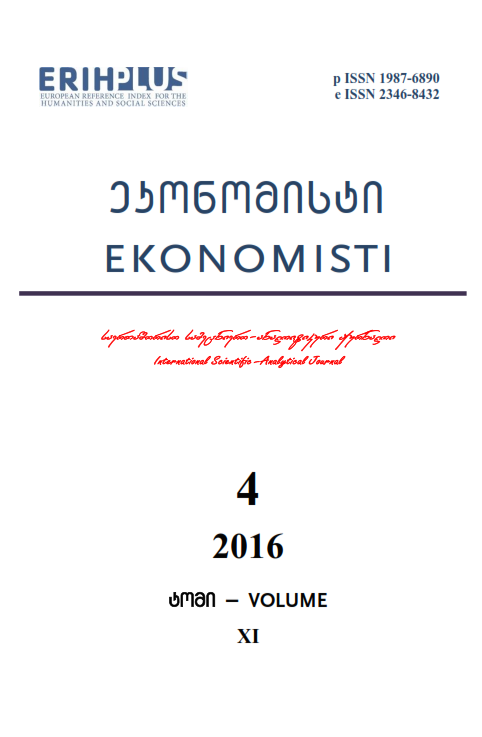
The international scientific and analytical, reviewed, printing and electronic journal of Paata Gugushvili Institute of Economics of Ivane Javakhishvili Tbilisi State University

Development of the Industrial Sector in the EU and the Candidate Countries
DOI: 10.36172/EKONOMISTI.2024.XX.03.JAMAGIDZE
Expanded Summary
Industrial sector affects economic development in multiple directions. Although currently services take the largest share of the employment and GDP in developed economies, their growing interest towards industrialization and industrial policy issues is obvious. Industrialization is also present in the development global agenda, as it is included in Sustainable Development Goals. Because of its close connections with other sectors of the economy, industry and especially manufacturing makes a positive influence on productivity, employment and economic growth. Many innovations and technologies emerge in industrial sectors and have spillover effects on other branches of the economy, including services. Another advantage of industrial development in related to diversification, which makes an economy more resilient against internal or external shocks.
In the EU industry accounts approximately 20% of the economy and creates 53 million jobs. The goal of the present paper is to analyze the state of the industrial sector in the EU and the candidate countries. It aims to study further approximation and integration prospects. The research is focused on the contribution of industrial sector development in fulfilling the economic criterion of accession, namely, in enhancing the capacity to cope with competitive pressure and market forces within the Union. Simultaneously it can contribute to the enhancement of international competitiveness of the candidate countries.
The industrial strategy of the EU comprises both horizontal and vertical measures. They aim at supporting more sustainable, resilient, green and globally competitive economy. The industrial strategy is designed to enhance single market, support EU strategic autonomy and ensure twin transition through green and digital transformation.
Candidate countries need actions that are compatible with the EU industrial strategy. Step by step they have to support technology upgrading within industrial value chains, enhance innovative small and medium businesses and carry out structural reforms for the green and digital transformation. One of the essential steps is to narrow the existing gap with the average EU R&D funding.
In order to make a comparative analysis of the industrial sector in the EU and the candidate countries we rely on industrial value added, labor productivity and manufacturing export data. Comparative performance of the industrial sector is assessed by using panel index numbers, which reveal the position of the individual countries towards each other as well as through 2014-2023 years. The data are obtained from Eurostat, World Development Indicators and national statistics offices of the respective countries.
Compared to the EU, the pace of structural transformation has been slower in the candidate countries, therefore they have lower share of industrial sector in their economies. Candidate countries also lag behind the EU by industrial labor productivity. Thus they need to continue structural reforms in order to make use of the industrial growth potential and narrow the gap with the EU industrial development.
According to the panel index numbers of manufacturing exports, Georgia had weak positions during 2015-2021. However for the last two years manufacturing exports has improved. Better performance of exports compared to industrial production indicators can possibly be explained by re-export, rather than the development of the local production. Because the share of industry in Georgia’s GDP and employment is still low, also medium and high technology goods are weakly represented in manufacturing exports, Georgia’s structural and industrial policies should target high value-added industrial sub-sectors.
Keywords: Industry, Industrial strategy, the EU, the Candidate countries
